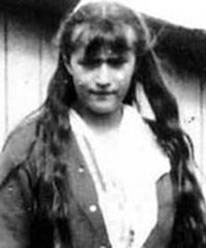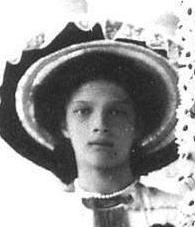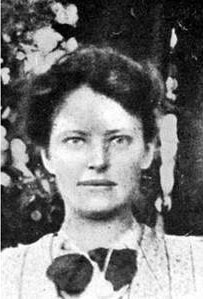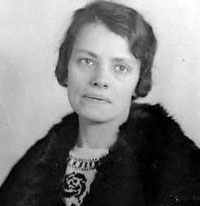As if the story of the Russian Revolution and the end of the Romanov dynasty was not strange enough, we have the endlessly fascinating story of Anna Anderson who claimed to be Anastasia, and succeeded in convincing a number or relatives and acquaintances of the Romanov’s that she was the real thing.

Anna Anderson was found attempting suicide in a river in Berlin in 1920 and taken to a hospital. Two years later, one of the other patients, Clara Peuthert , after seeing pictures of the Grand Duchess in a magazine, identified her as the Grand Duchess Tatiana, one of Anastasia’s older sisters.
A former member of the royal court circle, Baroness Buxhoeveden, came to the hospital to see for herself; she immediately called her a fraud: she was too short to be Tatiana.

Anna Anderson subsequently identified herself as Anastasia instead. On the right are the pictures: Anastasia, then Tatiana, then…. a polish peasant girl who had gone missing about the same time Anna Anderson was found in the river, Franziska Schanzkowska. And then, Anna Anderson.

Anna Anderson (Franziska Schanzkowska)

Anna Anderson
So why did anyone ever seriously consider her claim to be Anastasia? Apparently some Russian émigrés had designs on the rumoured millions in gold Nicholas had supposedly shipped overseas to fund a government in exile. When they heard about Anna Anderson’s claims, they saw a route by which to lodge legal claims against the estate of the Romanovs.
I had never realized before how stunningly similar Anderson looked to Tatiana, at least, from the pictures, who was stunningly similar to Franziska Schanzkowska. Except, of course, for the height, the fatal flaw.
As it turns out, DNA testing eventually proved that Anna Anderson was, almost certainly, Franziska Schanzkowska. In retrospect, it is hard to even accept that she was merely deranged. If she was not Anastasia, she had to have worked on the job of impersonating her, especially when she had been put to the test so many times. She had to have had help– most likely Gleb Botkin, the son of the the Romanov’s family doctor, who also died at the hands of the Communists.
That doesn’t explain how she was able to fool so many people for so long. How she apparently acquired the ability to speak English and French. Or why she appeared to be three inches shorter than Franziska’s claimed height.
Does it need to be explained that so many people were taken in by her even though she couldn’t speak a word of Russian? But then, some supporters came to believe that she could at least understand Russian, and speak a few words of it. But then again…. the Romanovs, apparently, preferred English.
It is duly noted that Anna Anderson’s height and shoe-size did not correspond exactly to Franziska Schanzkowska’s, and that she showed many scars and injuries that Franziska, it is a alleged, did not have at the time she disappeared. I don’t find this evidence as compelling as the DNA evidence, but it has given ammunition to a small number of determined supporters to continue insisting that Anna Anderson really was Anastasia.
It’s a very strange story. If Anderson definitely resembled Franziska and Franziska bore an uncanny resemblance to Tatiana and Tatiana is Anastasia’s sister–
By the way, the movie, with Ingrid Bergman and Yul Brynner, is lame. But you can see why they tried: there is a brilliant movie in there somewhere.
Incidentally, I am intrigued by the number of contemporary writers, sympathetic to the Royal Family, who enjoy enumerating the vast list of atrocities some editorialists had ascribed to Rasputin, as if the obvious exaggeration meant he really wasn’t all that bad of a guy. Why? Because he only seduced a hundred women instead of a thousand? Because he was a lunatic but not a madman? Because he practiced extortion but not mass murder? The same applies to Nicholas II and Alexandra: the fact that they were not the monsters the Bolsheviks made them out to be doesn’t mean they were not appallingly bad leaders who, convinced they had been appointed by God, blindly and stubbornly led their own nation to ruin. Had Nicholas instituted a few reasonable, modest reforms at the right time, there would have been no Russian Revolution, and history would have been kinder to millions of people.
If you insist on believing that Anna Anderson might well have been the Grand-duchess… read this.
Interesting Trivia: the grand duchesses slept on the same metal cots wherever they traveled. They were folded up and taken with. Give me the simple life…. Interesting Trivia #2: the Romanov family mostly spoke English in the house, not Russian.
